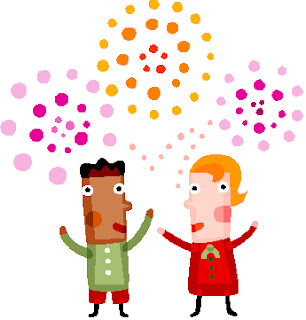I used a brush to apply the glue to the two pieces of fabric I used; that was because my glue cap was broken, and I wasn't able to squeeze glue out through the cap-- but either way can work fine.
Here is a photo from the beginning of making an owl picture. You may not be able to see the owl design but it is there! I painted it on with clear glue and let it dry thoroughly before starting to paint. Acrylic paint is used, as it is permanent after it dries. Here is one eye.
And here is the entire painted owl . . . as you can see from the print left on the cardboard that was underneath, quite a bit of paint will seep through-- so you need to have something under the cloth to absorb this, then move the cloth off so it doesn't stick to this blotting material as it dries. The fabric used was thin white cotton.
I also made a heart, on muslin--
Gluing, letting glue dry, and painting are the first three steps. Next, you need to let the paint completely dry, and then soak the cloth in water for about 20 minutes.
This dissolves the glue, and here is the result:
After the wet fabric dries, you can use it for sewing, wearing (if you use a piece of clothing), or as decorative art; I found that when I attached the batik pieces to the glass of a sunny window, the shining light made the details of the resist areas even more evident.
By the way, did you know that just one country is known as a hub for creating batik art? It is Java, in Indonesia-- although batik had been known to be used in China and Japan as early as the 6th century A.D., it didn't continue to be used very much in these countries. On the island of Java, it has been continually used for many centuries up to the present-- and was further developed by the Dutch when it was a Dutch colony.
Through Dutch and English traders, batik was introduced to Africa. Batik is a popular form of design today in many countries, especially in Indonesia, Malaysia, Japan, China, Azerbaijan, India, Philippines, Sri Lanka, Egypt, Nigeria, Senegal, and Singapore.
Would you like to try it? Maybe I will experiment with the traditional wax method sometime-- the cracks that occur in wax can give a certain special effect; but this clear glue technique was very easy to do, and I think it gave good results.














